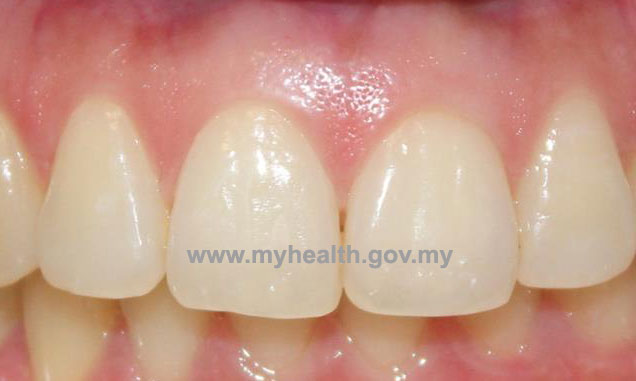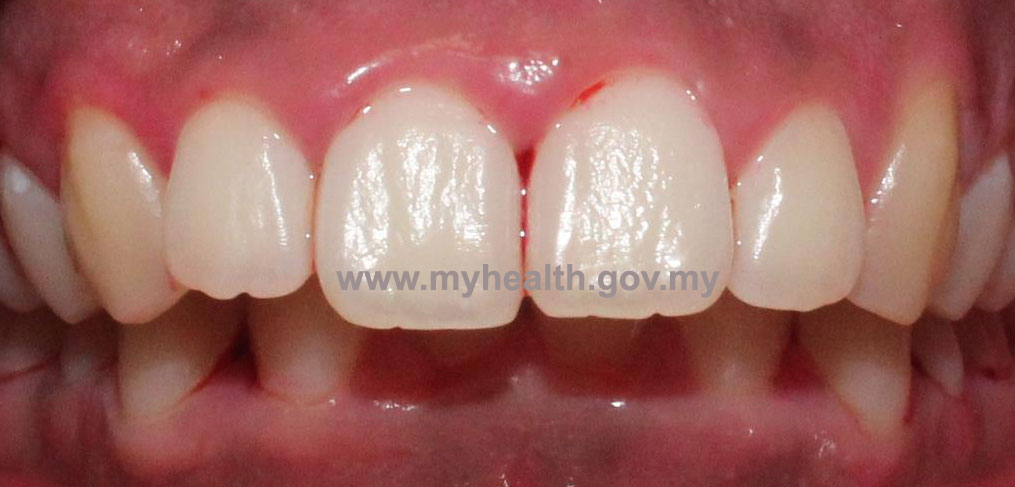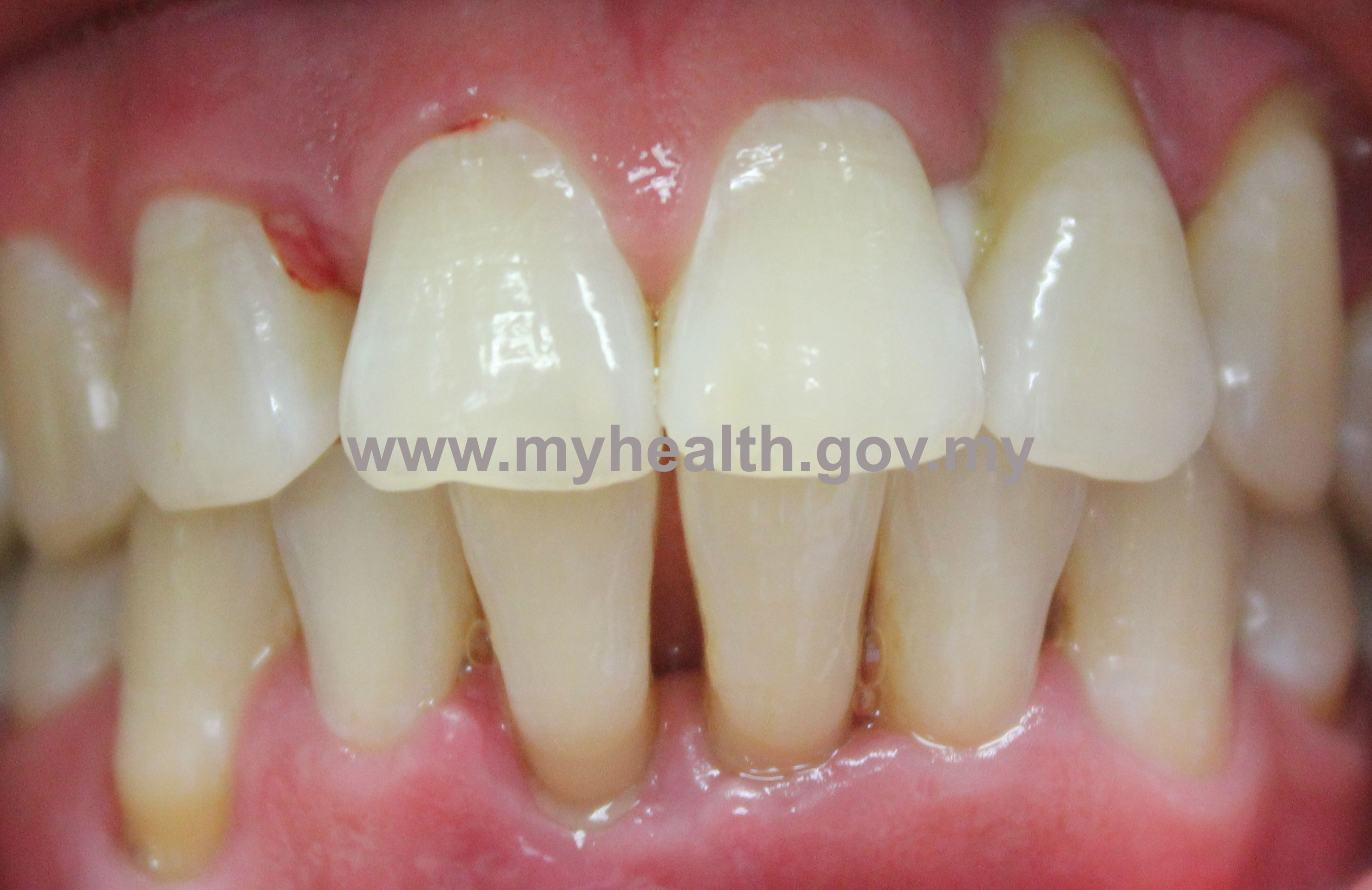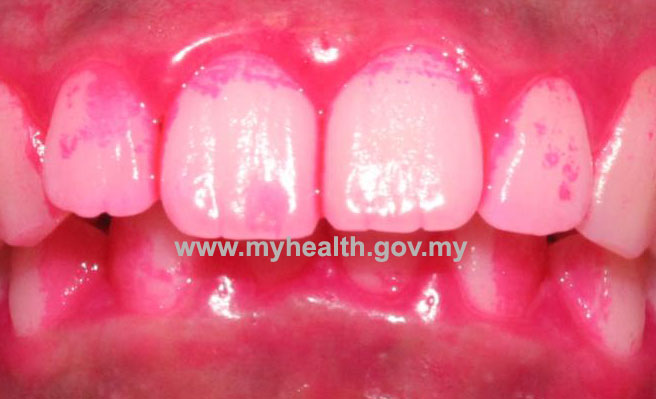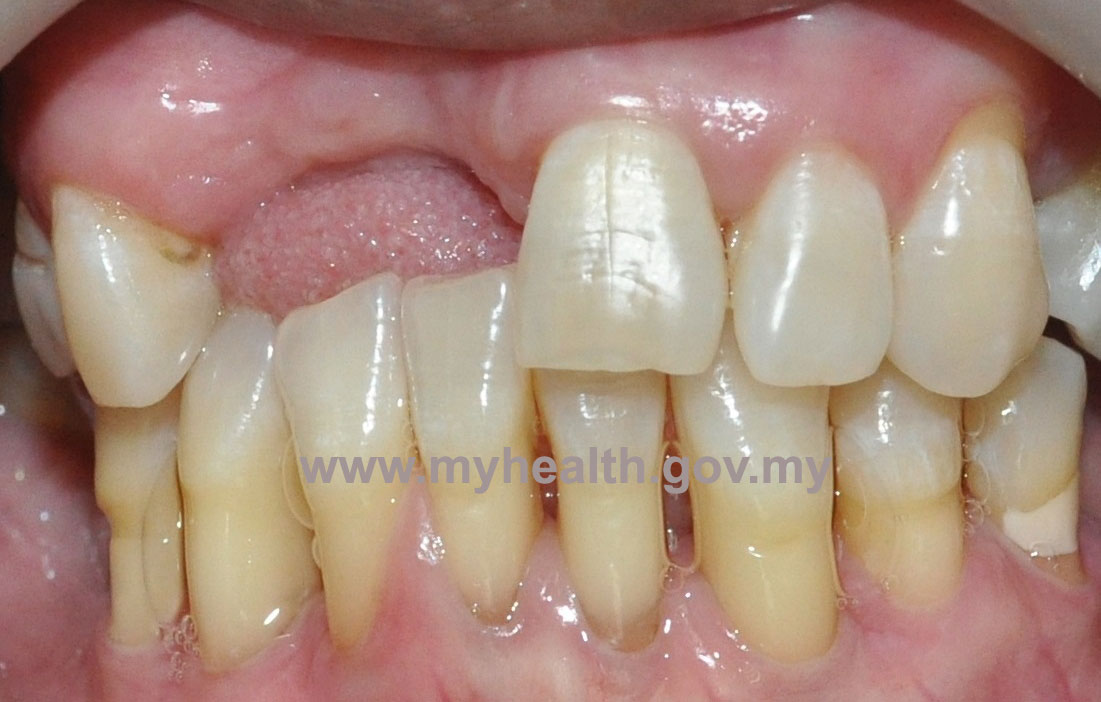Introduction
The importance of teeth is never truly appreciated until it is gone. Dentures are removable appliances that can replace missing teeth. It can help to restore quality of life by helping with day-to-day function, such as mastication, speaking, and aesthetic. Complete denture is used when all the teeth are missing in upper or lower jaw, whereas partial denture is used when one or more natural teeth remain in upper or lower jaw.
Constructing a denture is a time consuming procedure. It depends on many factors such as types of denture, techniques used, patient availability etc. Thus, to ensure a long term outcome in denture treatment, a thorough treatment planning is very important. The treatment should not jeopardize the remaining dentition and the supporting tissues. One of the prerequisite is to take into account is the condition and prognosis of the remaining teeth and gums. Patient’s oral hygiene is also one of the important factors which can contribute to the long-term outcome of denture treatment.
Following denture insertion the remaining teeth and gum are at risk of having diseases particularly in cases with insufficient oral and denture hygiene care.
The Importance Of Healthy Gum
Teeth are anchored and supported within the jaw bone by the underlying supporting structures, which consist of alveolar bone, periodontal ligament, cementum, and the overlying gums. Intact supporting structures of teeth are important in determining the long-term prognosis of teeth. Clinically it can be evidenced by the appearance of healthy gum (Figure 1). Indirectly it will affect the life span of a denture.
Gum Diseases
Gum diseases are one of the major global dental diseases. In Malaysia the prevalence rate is high, affecting 94% or 14.4 million of population (NOHSA, 2010). Indicating that only 1 out of 10 adult in Malaysia has healthy gum, whereas the rest may have some degree of gum diseases. The most common form of gum diseases are gingivitis and periodontitis.
Chronic inflammation of gum tissue is also known as gingivitis (Figure 2). It is a mild type of gum disease which is usually associated with poor oral hygiene. Clinically, gums are swollen, reddish, and frequently easily bleed. In this form of gum disease there is no loss of underlying bone or soft tissues. Thus, teeth are firmly supported in its original position. If gingivitis is diagnosed and treated early, it can be reversed to the initially normal appearance.
Untreated gingivitis may progress into more severe type of gum disease that is periodontitis (Figure 3). Unlike gingivitis, periodontitis is irreversible. Periodontitis may presence with different type of severity. At this stage of disease, bone and/or tissue loss occur. Thus, teeth loss their support. Treatment is usually aimed to control the disease and to prevent from causing further damage to the supporting structures. Advanced gum disease may lead to tooth loss if left untreated. Gum disease is generally known as one of the leading cause of tooth loss in adults. Generally the gum appears similar to gingivitis and tooth may become longer and mobile.
Most of gum diseases are caused by the plaque (Figure 4). Plaque is a thin layer of sticky material containing microorganisms which formed on the tooth surface everyday. Initially the plaque contains harmless microorganisms. With time if it is left undisturbed or insufficiently removed during brushing, the environment of plaque will favor the growth of harmful microorganisms which cause the gum diseases. Adequate plaque control is essential for the maintenance of a healthy gum. Gum diseases can be treated if plaque control is established.
How Gum Diseases May Affect Denture Treatment?
Gum diseases may affect the denture treatment planning in several ways such as:
- Swelling of gum due to gum disease may result in dimensional changes of gum. This changes may affect the fitting of denture, especially in the presence of gum disease before, during or after denture construction.
- Gum diseases usually related to poor oral hygiene. Denture construction is usually not encouraged in those with poor oral hygiene as the presence of denture may retained more plaque and self-performed oral hygiene might be more difficult in the presence of denture in the oral cavity.
- In individual with advanced gum diseases, depending on the severity of the disease, the periodontally involved teeth may presence with some degree of mobility, elongation of tooth, and tooth drifting (Figure 4). All these may affect denture treatment planning and the long term outcome of the denture. Among the problems that might arise are:
- To determine the prognosis of remaining teeth which might differs from one tooth to another as the prognosis of these teeth will indirectly affect the denture shelf life.
- Difficulty in getting retention and stability when designing the denture. Particularly in cases with missing all molar teeth and in cases with mobile teeth.
- Aesthetic might be compromised especially in cases with elongated teeth and spacing in between teeth.
- Drifted teeth in gum diseased patient may interfere with space availability in teeth setting during denture construction.
- Advanced diseases resulted in severe alveolar bone loss and followed by tooth loss. The alveolar ridge will become flatter and provide less retention for denture construction, this is more important in full denture cases since the retention of denture depending mainly on the shape and size of the remaining alveolar ridge.
Therefore, active gum disease must first be controlled as healthy gums are important to ensure longevity of the dentition. Dentures are made when gums are restored to a healthy condition and sufficient amount of time are given to allow healing of the tissues.
However, there are isolated cases in which denture need to be constructed during the phase of active disease such as:
- Missing teeth in aesthetic region.
- Lost of masticatory function, example is in cases with missing molar teeth.
- In the presence of the risk of over eruption of the teeth opposite the edentulous area.
Generally, those who are able to demonstrate adequate oral hygiene technique in the presence of active gum disease can be prescribed with denture.
How Denture Wearing May Affect Gum Health?
The presence of denture in the oral cavity usually related to the plaque accumulation on the denture surfaces and the remaining abutment teeth. The ability of the denture to retain plaque is depending on the type of denture and its surfaces. Acrylic denture is more porous and facilitate plaque formation, particularly on the fitting surface which is not polished. The polished surface does not prevent plaque formation, but it facilitate plaque removal while the glaze layer is still intact. Whereas Cobalt-chromium denture is more hygienic. However, the main contributing factor will be the ability of patient to keep an optimal oral hygiene and denture hygiene.
Plaque accumulation around and underneath the denture responsible for the development of gum diseases, gum recession, and caries (Amaral et al., 2010). Depending on the types of denture material used, the denture design would differ. Design with more mucosa coverage may facilitate more plaque accumulation.
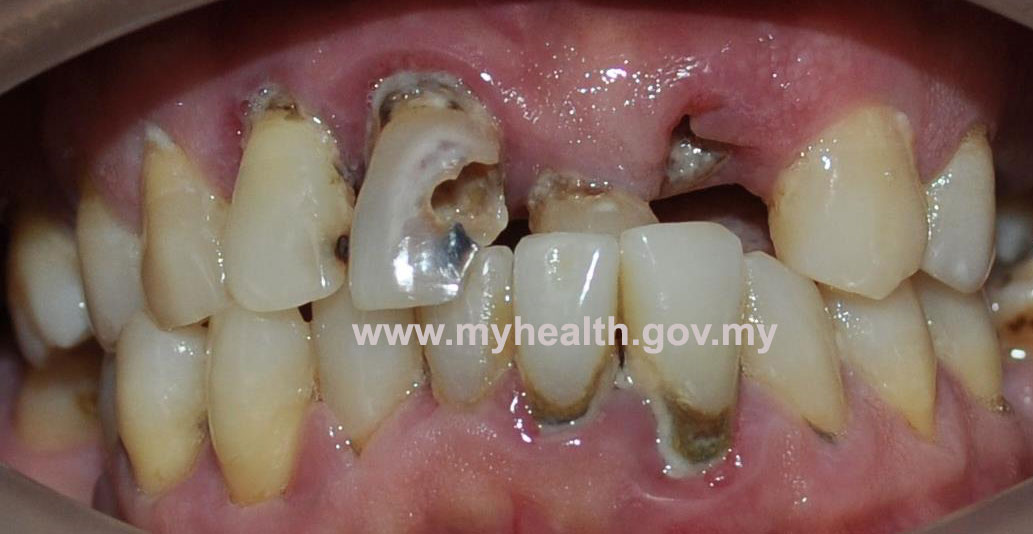
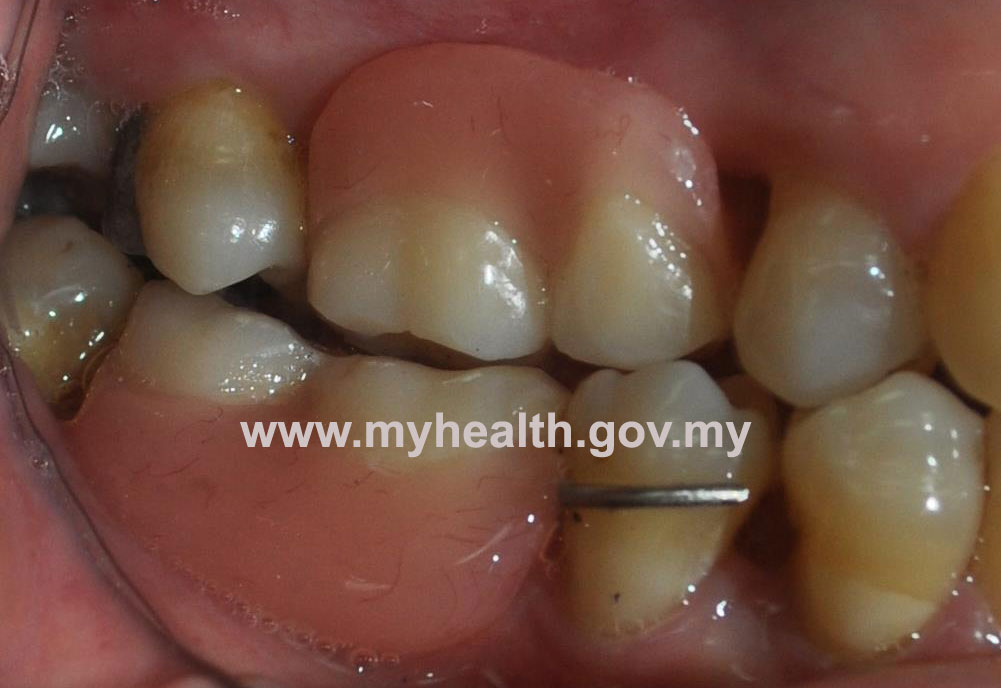
Figure 5: Gum Diseases, caries and gingival recession
Another effect of plaque accumulation underneath the denture is the development of Denture Induced Stomatitis (Figure 6), which is a chronic inflammation of the underlying tissues due to fungal infection and usually is difficult to be treated. The risk of developing Denture Stomatitis in those who are wearing denture is up to 36.7% (Emami et al., 2012).
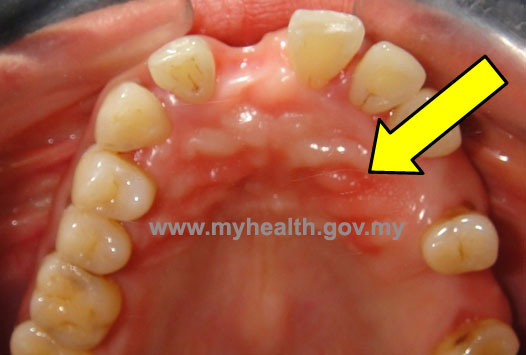
Figure 6: Denture induced stomatitis
Chronic irritation from ill-fitting denture or poor denture hygiene may result in hyperplastic condition of the oral mucosa such as denture induced hyperplasia (Figure 7).
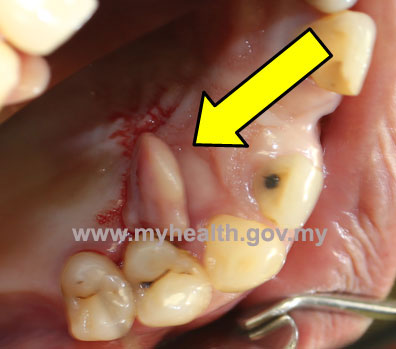
Figure 7: Denture induced hyperplasia
Patient may has allergy to denture material such as acrylic, but it is infrequently reported. Most of allergy cases reported have been described as local reaction, only few reported of systemic reaction. Usually appear as inflamed mucosa under the denture with well define margin from surrounding unaffected mucosa.
How To Maintain Healthy Gum In The Presence Of Denture?
Most of the problems resulted from poor oral and denture hygiene. Meticulous oral hygiene instructions from dentist following denture insertion play an important role in reducing the risks associated with wearing denture. Post insertion care is aimed to preserve what remains in the oral cavity and to allow optimal function of the denture as long as possible.
Denture wearer must know:
- The importance of oral and denture cleanliness for maintenance of oral health and must be capable of maintaining an appropriate standard of oral and denture hygiene.
- The importance of regular review for at least every six month to ensure that:
- A satisfactory standard of oral hygiene is maintained.
- Remaining dentition and surrounding tissues are healthy.
- Prosthesis is functioning as intended.
- Gum diseases are very prevalence and it is our responsibility to prevent it by looking after our oral hygiene dan following instructions and advice given by dentist.
References
- Do Amaral, B.A., Barreto, A.O., Gomes Seabra, E., Roncalli, A.G., Da Fonte Porto Carreiro, A., & De Almeida, E.O. A clinical follow-up study of the periodontal conditions of RPD abutment and non-abutment teeth. J. Oral Rehab; 37(7): 545-552.
- Emami, E., Taraf, H., de Grandmont, P., Gauthier, G., de Konick, L., Lamarche, C., & de Souza RF. The association of denture stomatitis and partial removable dental prostheses: A systematic review. Int J Prosthodont; 25(2):113-119.
- Oral Health Division, Ministry of Health Malaysia. National Oral Health Survey of Adults 2010 (NOHSA 2010). November 2013.
| Last Reviewed | : | 19 June 2015 |
| Writer | : | Dr. Razida bt. Ismail |
| Accreditor | : | Dr. Chan Yoong Kian |


